How to Dropship on Amazon
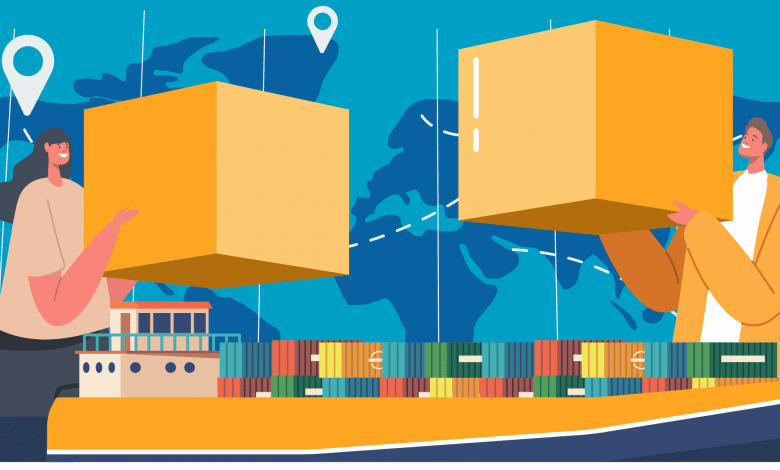
This article contains affiliate links that will allow us to earn commissions without any extra cost to you. Read our full disclosure here.
Dropshipping is probably as old as retail itself, but it’s making some sort of pandemic-induced comeback, and a lot of rookie entrepreneurs are getting into online selling using this popular business model.
In this article, we’ll talk about dropship on Amazon, its benefits and disadvantages, and how to do it right.
Related Listening: E286: Yes, A Successful Dropshipping Business is STILL Possible
What is Dropshipping?
Dropshipping is a business model where an ecommerce seller (the dropshipper) does not actually keep an inventory of the product it sells. Instead, when it makes a sale, the dropshipper forwards the order to a third-party supplier and has that supplier ship the product directly to the customer.
As a dropshipper, you profit from the difference between the wholesale price at which you buy the goods from your supplier and your marked-up retail price.
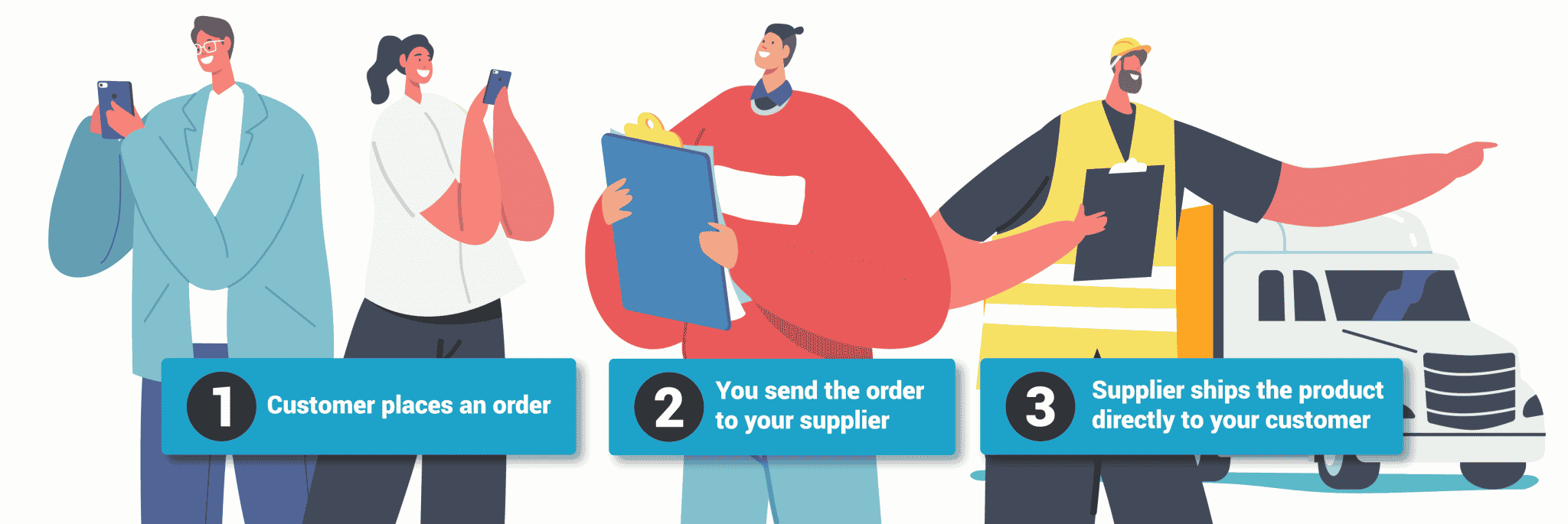
Needless to say, product research and marketing is the name of the game for dropshipping.
Since you are essentially playing middleman, public opinion on dropshippers ranges from legit entrepreneurs to total snake oil salesmen. But there’s in fact money to be made and a right way to go about it on Amazon—some of us here at EcomCrew are actually recovering dropshippers.
Dropshipping vs. Retail Arbitrage vs. Private Labeling
Before we get into the meat and potatoes, let’s compare dropshipping to a couple of other popular ecommerce business models: retail arbitrage and private labeling.
Retail arbitrage (Amazon arbitrage if you’re selling on Amazon) is buying products for cheap from a retailer and flipping them for profit. Under this model, you do in fact own inventory at some point, which you typically rack up during big clearance sales or heavy-discount seasonal promotions from big stores.
Private labeling is buying off-the-shelf products from suppliers (usually from China) and selling them under your own brand.
| Dropshipping | Retail Arbitrage | Private Labeling | |
|---|---|---|---|
| How it's done | Selling products online and having the supplier ship directly to the customer when a sale is made | Buying items in bulk for very low prices and re-selling them for profit on online marketplaces like Amazon | Buying off-the-shelf products from a supplier and selling them exclusively under your own brand |
| Ease of setting up | Relatively easy. Most of your efforts go into setting up an online store and marketing the products | Easy. You wanna keep tabs on sales and promotions from which you can source products to sell | Moderate. Developing a product and finding the right supplier is a pain point for most private-label sellers |
| Initial investment needed | $ | $$$ | $$$$$ |
| Sustainability | Not as sustainable. Your entire business depends on the supplier | Somewhat sustainable as long as you can source cheap products to resell | Ideal for long term. Your business becomes more established as you develop your brand and product line |
What is Amazon Dropshipping?
Amazon dropshipping is essentially the same as your classic dropshipping model, except that you sell the products on Amazon’s marketplace, instead of selling them exclusively on a standalone ecommerce store.
A lot of dropshippers prefer to do it on Amazon because of all the built-in eyeballs and its huge market share. Plus, Amazon can integrate as a sales channel with your self-run ecommerce site or Shopify store.
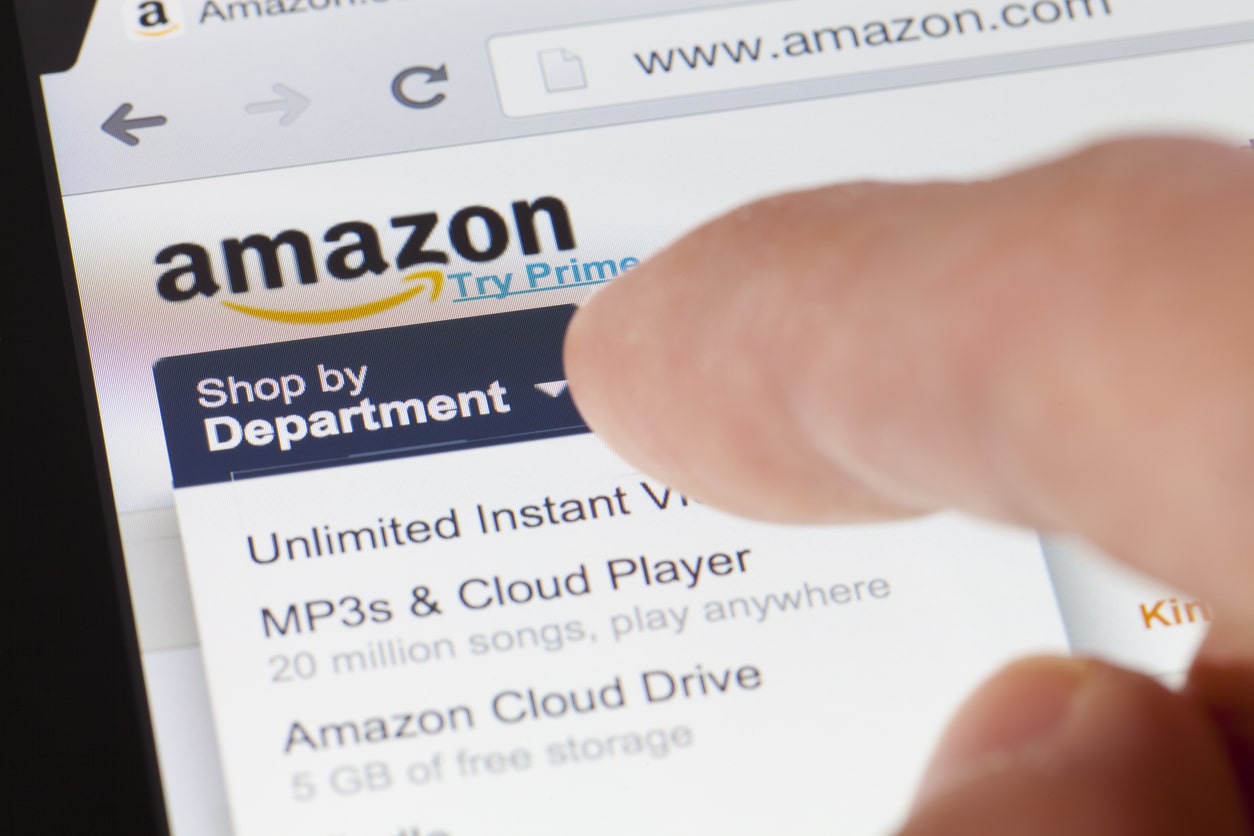
While dropshipping on Shopify or eBay are relatively easy, doing it on Amazon is a tad trickier.
Amazon’s Dropshipping Policy
Amazon has a long-standing (and recently updated) policy on dropshipping.
Does Amazon Allow Dropshipping?
If you intend to dropship as an Amazon seller, you must always:
- Be the seller of record of your products;
- Identify yourself as the seller of your products on all packing slips, invoices, external packaging, and other information included or provided in connection with them;
- Remove any packing slips, invoices, external packaging, or other information identifying a third-party drop shipper prior to shipping the order;
- Be responsible for accepting and processing customer returns of your products; and
- Comply with all other terms of your seller agreement and applicable Amazon policies.

Amazon also provides a couple of examples of dropshipping that is not permitted:
- Purchasing products from another online retailer and having that retailer ship directly to customers, if the shipment does not identify you as the seller of record or if anyone other than you (including the other online retailer) appears on packing slips, invoices, or external packaging; or
- Shipping orders with packing slips, invoices, external packaging, or other information indicating a seller name or contact information other than your own.
Can I Dropship on Amazon From AliExpress?
The official Amazon policy discussed above means that dropshipping products off of online retailers like AliExpress, eBay, and Walmart, are against Amazon’s policies.
That being said, AliExpress remains the go-to place for sellers who want to start dropshipping on Amazon, largely because it’s a B2B marketplace that helps sellers find and connect with suppliers of goods they want to sell online (although it’s also accessible to shoppers looking for good deals).
It’s common practice for dropshippers to build strong relationships with their suppliers to make sure the suppliers don’t ship orders with their own company information or any information that does not point to you as the seller.
Needless to say, it’s a big no-no to ship your dropship orders with the packaging, branding, or any identifying marks of another retailer or another seller—the orders should be shipped under your name! For customers, receiving packages with the information of another retailer hurts their shopping experience. For sellers, this could mean account suspension or deactivation off the marketplace.
On the other hand, Amazon lets you dropship on its platform as long as, to the customer, there is zero indication that your products are… dropshipped.
More to the point, the only form of dropshipping allowed on Amazon is if you’re selling off of a legitimate dropship supplier. Sure, some people bend and even break Amazon’s house rules, but that’s just aching for account suspension.
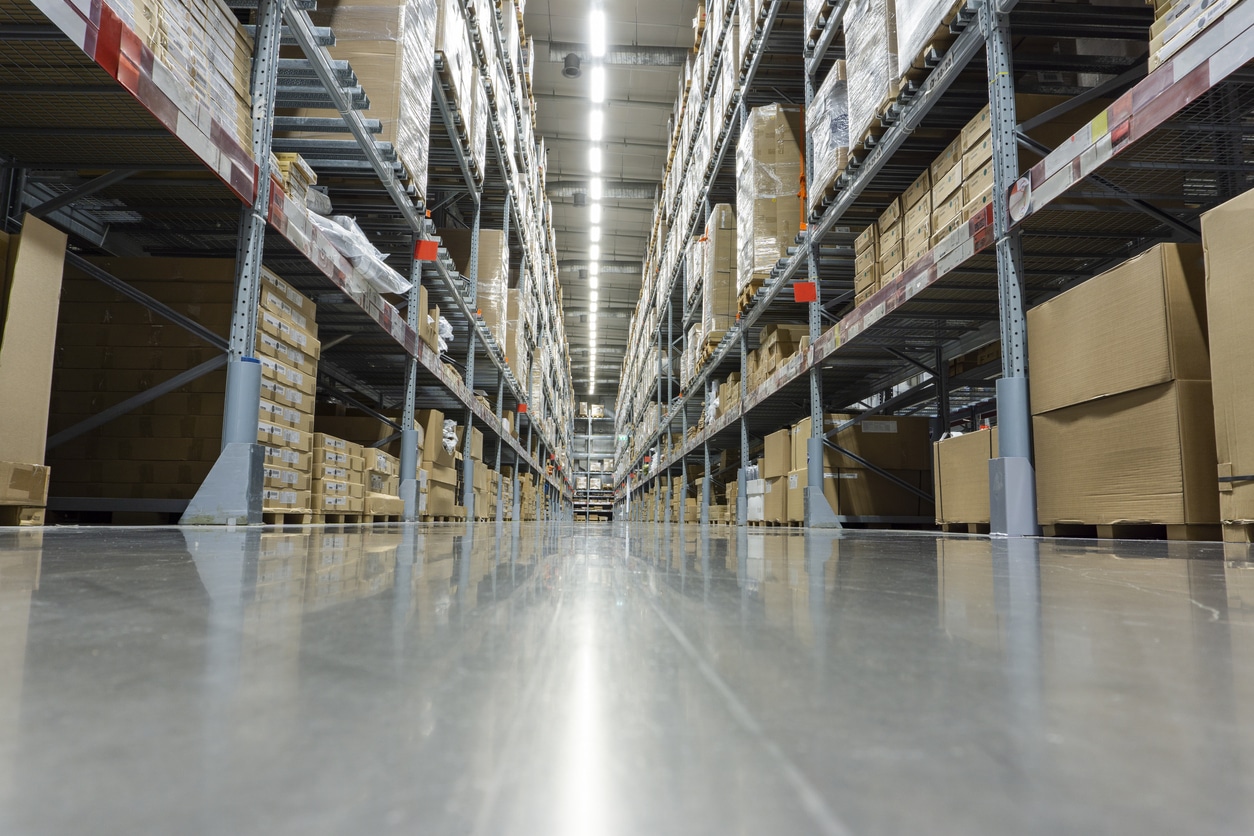
Can I Be FBA and Dropship on Amazon?
The short answer is no. In fact, dropshipping and doing Amazon FBA are almost mutually exclusive—although that hasn’t stopped a lot of sellers from “dropshipping through Amazon FBA”.
By definition, in dropshipping, you never really own any inventory, so there’s nothing to ship and store inside Amazon’s massive warehouses.
On the other hand, doing FBA means you actually pay for and own the products, regardless of whether you see them in the flesh or have them shipped into FBA warehouses directly.
A sort of middle ground, which you often hear from folks who have made this much within this amount of time by dropshipping on FBA, is to have your third-party supplier ship its inventory into FBA under your name.
Sounds like a can of worms waiting to be opened. Some potential complications that spring to mind:
- Unclear delivery dates and product quantities
- Not being able to ensure the quality of “your” inventory
- Not being sure whether your suppliers come through every time you arrange a shipment
- Running the risk of account suspension and not being able to withdraw your earnings
So, if you’re looking to dropship on Amazon and want to actually withdraw the money you earn, be merchant fulfilled and:
- Work with a third-party wholesale supplier and dropship their products online (We’ll have a section on finding the right suppliers further down this article); or
- Work with a third-party supplier, sell their products on your ecommerce store or Shopify, and integrate Amazon as a sales channel.
Pros and Cons of Dropshipping on Amazon
Like other business models being used on Amazon, dropshipping has its fair share of disadvantages and advantages.
The most obvious pro is that with Amazon, you’re standing on the shoulders of a giant. With its 40% market share, Amazon offers a lot of eyeballs so it’s easy to tap into all that built-in traffic.
The biggest con is the cutthroat competition. Since dropshipping is relatively easy to do, you can bet that there will be a lot of other sellers trying to sell the same products as you. Expect that dropshippers who succeed are those who sell products at the highest volume for the lowest price, but that could easily turn into a race to the bottom.
Here are some other pros and cons of dropshipping on Amazon you should keep in mind:
Amazon Dropshipping Pros
- Large audience. Amazon has a massive audience and it has the largest market share out of all ecommerce marketplaces.
- Easier to set up and low upfront costs. Dropshipping has little to no upfront costs and is a lot easier to start doing than Amazon arbitrage or private labeling.
- Little to no overhead. Since you don’t hold any inventory, you don’t have to worry about overhead costs.
- Low risk. Dropshipping lets you experiment with different products without breaking the bank, and Amazon has a wide variety of niche categories you can sell in.
- More freedom. You’re not tied to a specific location. As long as you can work with a supplier that can fulfill orders in a certain place, you can sell to customers within that place.
Amazon Dropshipping Cons
- Ruthless competition. There’s a very low barrier to entry, and since practically anyone can set up a dropshipping business, you can expect some tough competition.
- No control over product specs and no trademark protection. You can’t dictate the specs and quality of the product. Your customers could easily get products in poor quality and hurt your brand.
- Little to no control over supply chain. You are basically at the mercy of your supplier when it comes to inventory levels and shipping time. Remember that a stockout is one of the easiest ways to get your account suspended.
- Supplier errors. As the vendor, your business will suffer if the supplier makes errors in fulfilling orders.
- Razor-thin margins. Most of the money goes to your wholesaler, not to mention your margins are susceptible to price changes.
- Not as sustainable. A lot of dropshipping suppliers are starting to sell direct or even sell their products on Amazon themselves.
How to Dropship on Amazon
So how do you actually start dropshipping on Amazon? Here are the four basic steps:
1. Set up an Amazon Account
Signing up for an Amazon Seller Central account is relatively easy. We have an in-depth guide on everything you need to know to start selling on Amazon.
Be sure to have your personal information, billing info, and tax info ready when signing up for an Amazon Seller account.
A key thing to note is that a free Individual Account charges you $0.99 for every item sold, while a Professional Account, which is what you should go for if you plan to sell more than 40 products, will set you back $39.99/month.
2. Do your product research
Next, you’ll want to identify which category you wanna sell in or which product you want to dropship. There are tools that can help you research profitable products using Amazon data, and we’ll get to those in a bit.
Here are a few basic principles to get you started:
- Find niche products that are in demand all year round
- Products that are obscure or useful or both are ideal
- For high-maintenance products that would otherwise warrant storage costs, you’re better off dropshipping them
- Eye-catching products that you can aggressively market on social media
- Avoid Prime—products shipped through Prime means they are already being sold by an FBA-registered seller, which is nigh impossible to compete against
3. Find your supplier
Some proven ways to connect with dropshipping suppliers are:
- Google search. Running an internet search for suppliers is a lot of work, but you can usually hit suppliers up through their websites. Remember that you are not looking for tools or sourcing agents that connect you to a supplier, but an actual dropship supplier. They usually have forms, where you can sign up to be a dropship retailer and their sites, provide contact details. If there are no contact details, that’s a huge red flag.
- Attending trade shows personally. While relatively harder than just scouring the internet, getting some facetime with your potential supplier is a good way to start a dropshipping business. Trade shows are ideal because you can personally vet multiple suppliers in one place.
- Dropship directories. A third option is to find and pay for a vetted list of suppliers that are ready to work with retailers or dropshippers.
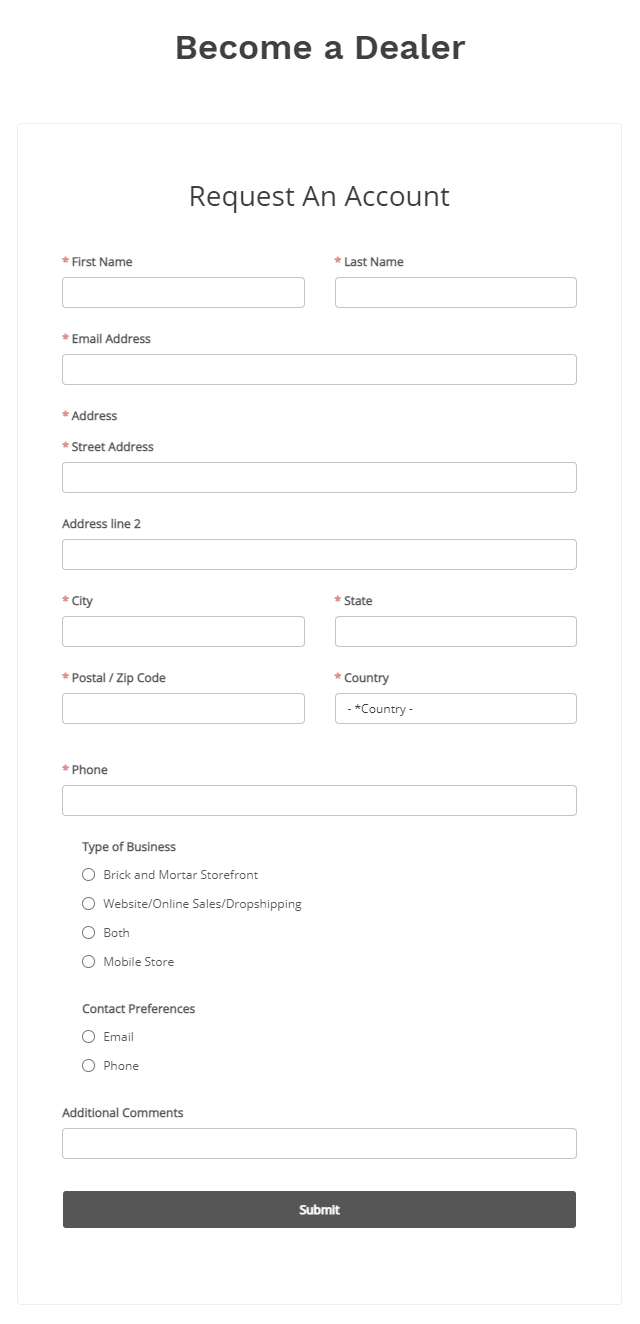
Always vet your suppliers. Although the best way is to actually get some facetime with wholesale suppliers, you can still do some investigating online. Make sure to ask questions and determine things like their inventory management, fulfillment process, and payment terms.
You’ll also want to ink a dropshipping contract with your chosen supplier. This helps in case Amazon comes up and asks you to present a letter of authentication from the wholesaler that you are in fact authorized to dropship their products.
4. Sell your products
The last step is to create an Amazon listing and start selling your product. If you’re marketing the product on a standalone ecommerce store or a Shopify site, integrate Amazon as a sales channel.
You want to be customer-centric and boast a killer listing.
Also, think of building your brand as you go along. This makes it easier to transition to more sustainable business models like private labeling once you master the ropes of Amazon.
Best Software for Dropshipping on Amazon
If you want to have as hands-free a business as possible, the best way to do that is to pick out the best software to automate your processes. Some key areas that need automation are order creation and tracking, inventory management, and repricing.
You’ll find a lot of these tools online. Here are some of the most popular software for dropshipping on Amazon:
Helium 10
One of the most popular all-in-one Amazon software out there, Helium 10 features tools for product and keyword research, listing optimization, and business analytics.
Plans (discounted if you opt to get billed annually):
- Free Trial
- Starter ($37/month; Core tools and expert training)
- Platinum ($97/month; Most popular single-user plan)
- Diamond ($197/month; Multi-user plan with expanded limits)
- Elite ($397/month; Highest-tier plan with live expert training)
Jungle Scout
Almost a must-have for Amazon sellers, this tool helps in finding, launching, and selling products on Amazon. It also features a useful assortment of supplementary tools like the Supplier Database Tool.
Plans (discounted if you opt to get billed annually):
- Basic ($49/month with full access to Jungle Scout browser extension)
- Suite ($69/month with review automation and access to advanced seller features)
- Professional ($129/month; Ideal for experienced sellers, with priority onboarding and 6 users included)
Sell the Trend
Sell the Trend is an all-in-one dropshipping platform that offers marketing and store automation, integrations, and supplier resources.
Plans:
- Free Trial
- Monthly ($39.97/month)
- Yearly ($32.97/month, 2 Free Months)
Sellery
An automated repricing software that lets you set price limits including shipping and boost your chances of winning the Buy Box.
Plans:
- Free Trial
- 1% of your gross monthly sales, with a minimum charge of $50/month and a maximum of $2000/month
Shopify
Shopify is the home of dropshipping. You can integrate Amazon as a sales channel on your Shopify site, and it allows you to track inventory and keep tabs on sales to be fulfilled.
Plans:
- Free (14-day trial)
- Basic Shopify ($29/month for newbies)
- Shopify ($79/month for growing business with at least 1 retail store)
- Advanced Shopify ($299/month for growing businesses with 2 or more retail stores)
Spocket
A machine-learning-powered tool for product discovery and sourcing that’s ideal for those looking to dropship on US and European marketplaces.
Plans:
- Free
- Starter ($24/month with 25 unique products and email support)
- Pro ($49/month with branded invoicing and chat support)
- Premium ($99/month with 10,000 unique products and premium products)
Conclusion
Dropshipping on Amazon can be tricky and there are a lot of rules you should play by.
It can be useful for complementing your catalog of private-label products. It’s also a low-risk way to dip your toes in ecommerce and as a gateway into a more sustainable ecommerce business model.
Is Amazon dropshipping on its way out? Or is it here to stay? Leave us a comment down below.




It is really amazing article, You are well-known ecommerce content writer, it really helpful and inspired.
Wow! This is really interesting. I know a lot of stay at home mums that would want this
You mentioned in your article that we can use spocket for dropsshipping on Amazon but on spocket’s website it says that you can not dropship to Amazon.